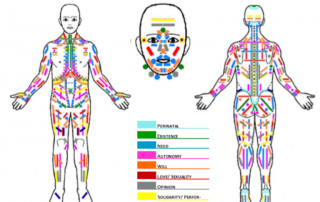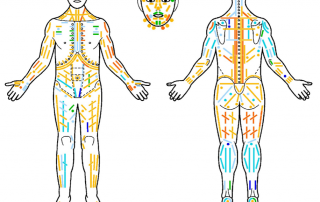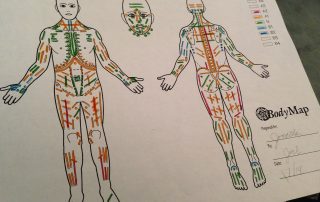Bodymap Testing & Interpretation
A central hypothesis in Bodynamic Analysis concerns the time period in which individual muscles come under voluntary control. There is observed to be a critical time period in which they acquire an imprint. This imprint is not simply about physical strength or kinesthetic ability. It concerns the psychological content or issue associated with the activity or function of this muscle. Thus the muscle encodes or "remembers" what happened in the emotional/ psychological environment in the time period in which it came under conscious control.



